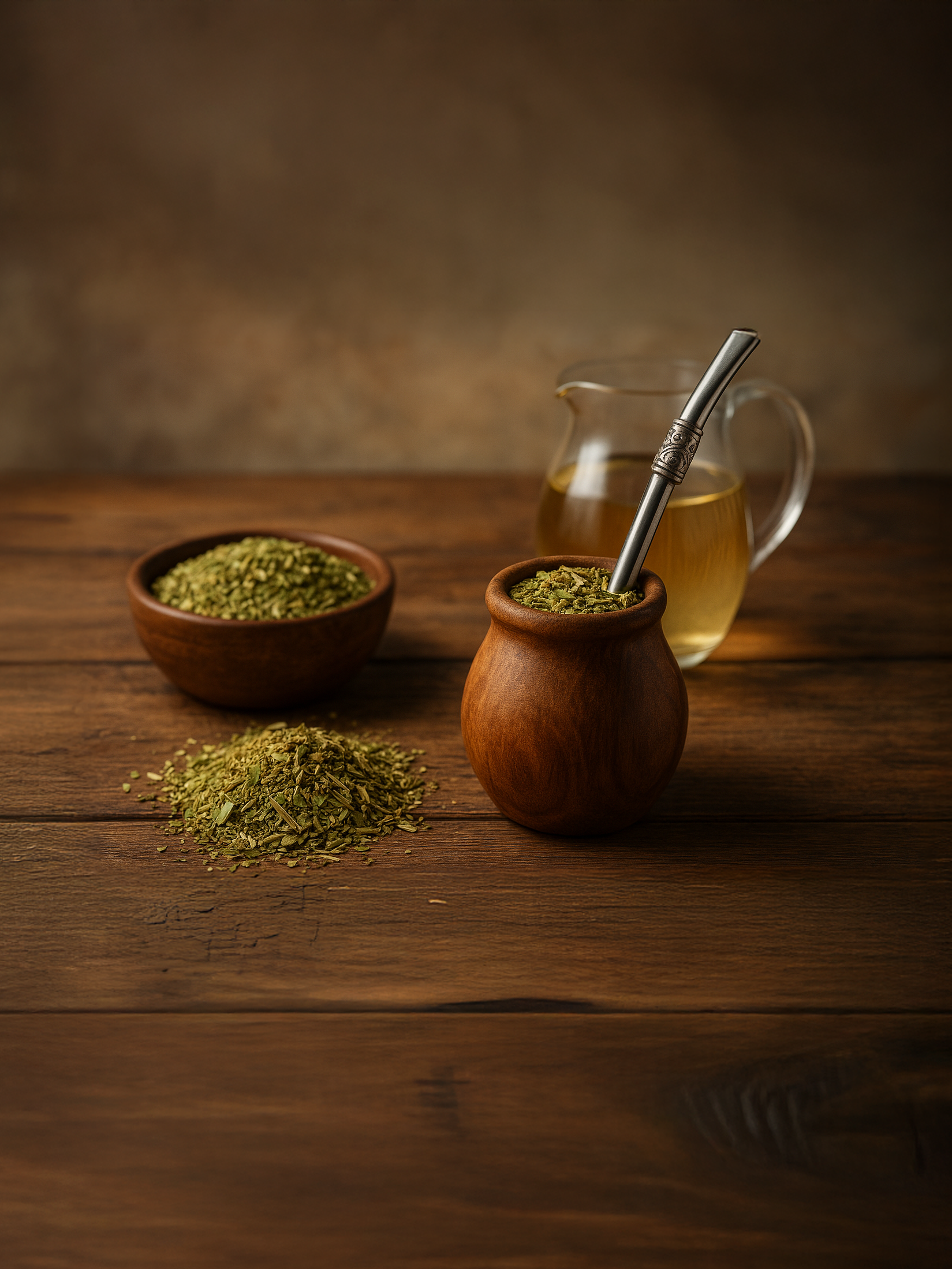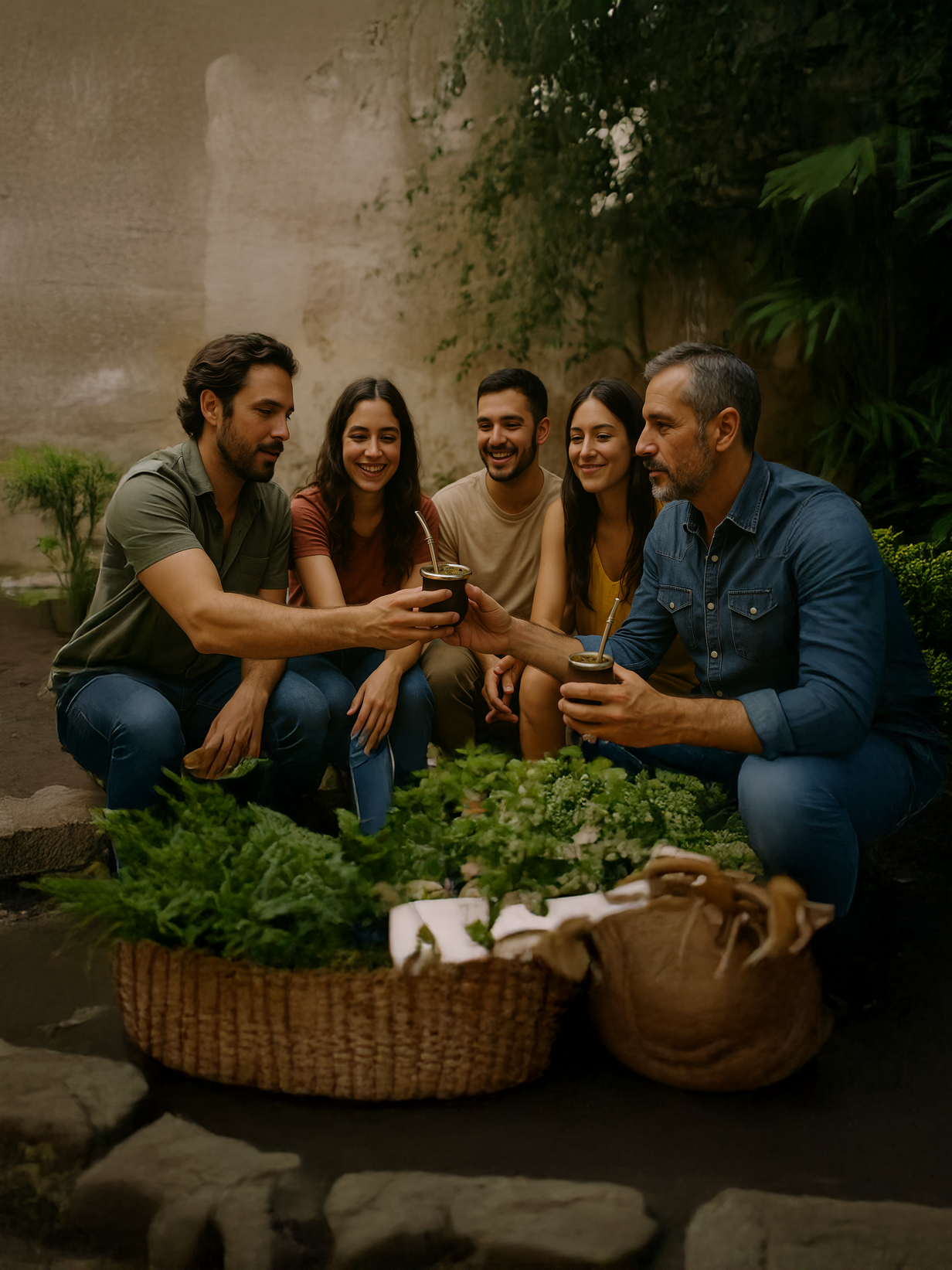What is Maté?

Maté is a natural drink prepared from the dried leaves of a plant known as Yerba Maté,
which belongs to the holly family (Aquifoliaceae) and is mostly grown in South American countries,
particularly in Paraguay, Argentina, and Uruguay.
The leaves are harvested, dried, and ground, then placed in a traditional cup,
usually made of wood or a hollowed-out gourd.
Warm water is added at a moderate temperature (not boiling),
and the drink is consumed through a metal straw known as a bombilla.
This beverage is popular in many countries,
including Syria, Lebanon, Argentina, Uruguay, Brazil, Chile, and Paraguay,
but the rituals surrounding its consumption vary from one culture to another.
In Latin American Culture:
In Argentina, Paraguay, Uruguay, and southern Brazil,
a single cup is filled with yerba leaves and warm water,
and then passed around from one person to another using the same bombilla.
The session is led by a specific person known as the Cebador,
who is responsible for preparing the cup,
managing the drinking sequence, and refilling the cup after each round.
This ritual expresses a spirit of togetherness,
a sense of order, and mutual respect.
Being part of that circle is seen as a sign of belonging and trust.


In Syrian Culture:
Drinking maté is common in various Syrian regions, such as Homs, Hama, Latakia, Tartous, Sweida,
and some neighborhoods in Damascus and Daraa.
It is considered an essential part of daily social life for many families and friendly circles.
In its most widespread form,
each person has their own cup, and water is poured from a shared kettle or thermos.
A common practice is that whoever refills their own cup also refills others’ cups automatically—
without being asked or told to do so.
This unspoken gesture reflects a spirit of initiative,
attentiveness to others, and natural participation.
However, there are also some Syrian groups who adopt a ritual closer to the Latin tradition,
where a single communal cup is shared and passed around—
particularly among friends or within families—
although this is still less common than the individual cup style.
Folkloric Insight:
In some regions, maté is served to guests before coffee
as a sign of deeper respect or a more intimate connection
It is sometimes used to break the ice or open conversation between strangers
Popular Flavors and Add-Ins:

Although maté is often consumed in its natural form (without additions), many people personalize it with extra ingredients depending on their taste. The most popular ones include:
- Sugar or honey:
To soften the bitterness of the flavor
- Mint or thyme: For a refreshing taste and to help soothe the stomach.
- Lemon or orange
(slices or peel):
Adds light acidity and a fresh aroma
- Apple peel or cinnamon: For a warm, cozy touch
- Milk:
Rarely used, but found in some cultures as a water substitute
- Ginger or clove: Commonly added in winter
- Ice cubes (for cold maté): Popular in summer or after exercise
Maté is very flexible in terms of flavor,
but it is extremely sensitive to water temperature:
Boiling water should be avoided, as it ruins the taste.
The Taste of Maté & First-Time Experience
• First Impression:
Most people find it “slightly bitter”, or “herbal” and unfamiliar at first. Some compare its taste to strong green tea or unsweetened licorice.
• After Repeated Tries:
It becomes part of a personal ritual or a group habit.
Many people grow attached to it whether as a morning routine or a social gathering drink.
Over time, the bitterness becomes something appreciated just like coffee or strong tea.
• Socially:
Maté is rarely enjoyed alone... it tastes better in a group.
It carries a spirit of sharing and conversation,
which adds warmth to the flavor and transforms the act of drinking into a deeper experience.



